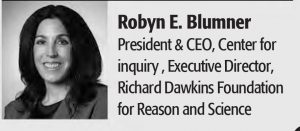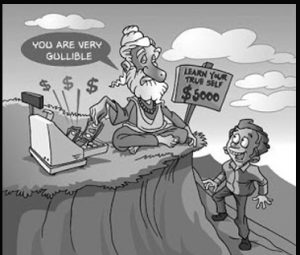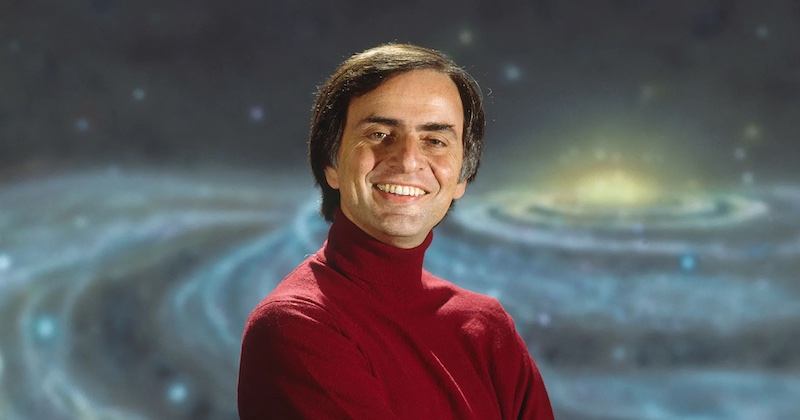
The title of this piece suggests I might have known Carl Sagan. Sadly, I did not have that honor. That’s not to say I didn’t have the opportunity to get to know him. I was an undergraduate student at Cornell University in the early 1980s when Sagan was a professor of astronomy there.
But I didn’t take any of his classes. The PBS television series Cosmos had aired in 1980, the same year the accompanying book was published, spending seventy weeks on The New York Times Bestseller List. That cemented Sagan’s international fame. His classes were really hard to get into. And while I was interested in astronomy, I had no appetite for chasing stars.
Now I’m sorry I didn’t try.
Carl Sagan, as many of you know, was part of an illustrious group of scientists and skeptics who founded the Committee for the Scientific Investigation of Claims of the Paranormal (CSICOP). That organization eventually became the Committee for Skeptical Inquiry (CSI), now a program of the Center for Inquiry (CFI). I know, it’s a lot of names and acronyms.
The important take-away is that Sagan is a pivotal and essential part of CFI history. It’s why CFI West in Los Angeles has named its theater after him and his coauthor and widow, Ann Druyan.
In 1994, Sagan appeared at a CSICOP conference in Seattle and gave the keynote address. Read (or reread) The Demon-Haunted World: Science as a Candle in the Dark, as I did recently, and the themes emanating from Sagan’s keynote speech are deeply explored in his book that was published just two years later. That was also the year of his untimely death at sixty-two from bone marrow disease and ultimately pneumonia.
I like to think that Sagan’s preparation for his keynote inspired him to write his seminal book on skepticism. Whether that speech had anything to do with the book or not, it was nice to see Skeptical Inquirer’s eminent editor, Kendrick Frazier, prominently mentioned in the book’s acknowledgements, along with so many of CSICOP’s founders, including Martin Gardner, Isaac Asimov, Paul Kurtz, and James Randi.
One of the formative stories that Sagan told during his speech that didn’t appear in the book was of how his childhood curiosity of the nature of stars led him to his first library card.
In Sagan’s telling, when he was very young no one he asked could tell him what the stars that appeared in the night sky were, and no one seemed to think the question was very interesting. Finally, his mother told him he could find out for himself and gave him a library card. At the Utrecht branch of the Brooklyn public library, Sagan gathered up the courage to ask the librarian for a book on stars.
She went away and returned with a book. Sagan opened it, and there were pictures of Veronica Lake and Clark Gable. Not at all what he intended.
Sagan went back to the librarian and explained that he meant real stars. “She thought this was funny,” Sagan remembered. But this time she got him what he was seeking, an act that helped launch a future astronomer.
I would be remiss if I didn’t mention the delight Sagan held for Skeptical Inquirer magazine. In both his speech and in The Demon-Haunted World, Sagan talked about the anticipation he felt when new issues appeared. Sagan wrote:
On the day it arrives, I take it home from the office and pore through its pages, wondering what new misunderstandings will be revealed. There’s always another bamboozle that I never thought of. Crop circles! Aliens have come and made perfect circles and mathematical messages in wheat…

That’s all they can conceive the extraterrestrials doing … making crop circles in wheat? What a failure of the imagination!
Expanding his famous 1987 article in Parade magazine titled “The Fine Art of Baloney Detection,” Sagan spent seven pages in The Demon-Haunted World laying out his enduring “baloney detection kit.” This set of tools for skeptical thinking is still the essential list of ways to separate what is plausibly true from what is false or fraudulent.
Were Sagan alive today, he would not be comforted by the notable backsliding on this front. Today’s rampant disinformation and misinformation distributed on a scale so massive it was unimaginable twenty-five years ago have led to all sorts of societal ills, not the least of which is a large population of coronavirus-unvaccinated Americans who have allowed political tribalism to overwhelm their critical faculties. This national outbreak of irrationality reminds me of one of Sagan’s favorite cartoons. It’s a fortune-teller examining a client’s hand and confidently declaring, “You are very gullible.”
At the end of The Demon-Haunted World, Sagan got more political. He lauded America’s founders and their prescience in setting up the country’s system of government. He provided a full-throated defense of the principles of free speech and church-state separation. And he talked extensively about the European witch mania that led to the torture and death of thousands of innocents in the fifteenth to eighteenth centuries, as a cautionary tale for our own time. Sagan rightly credited the ideas of the European Enlightenment with helping to curtail the brutal insanity.
Which leads to his most trenchant warning. Sagan wrote:
If we are absolutely sure that our beliefs are right, and those of others wrong; that we are motivated by good, and others by evil; that the King of the Universe speaks to us, and not to adherents of very different faiths; that it is wicked to challenge conventional doctrines or to ask searching questions; that our main job is to believe and obey—then the witch mania will recur in its infinite variations down to the time of the last man.
The antidote to this, Sagan said, is understanding superstition using the tools of skepticism, employing the scientific method, and upholding the ideals of the Enlightenment.
It still is.
I hope Carl Sagan would be proud of the ongoing work of CSI and our flagship Skeptical Inquirer magazine. For—make no mistake—it is his legacy we are continuing to uphold.
Source: Skeptical Inquirer,
March-April 2022


